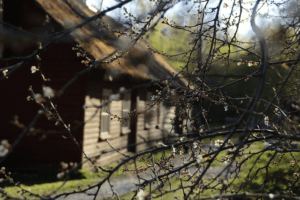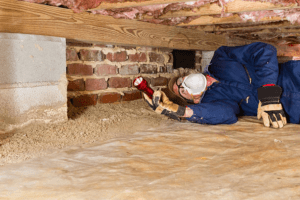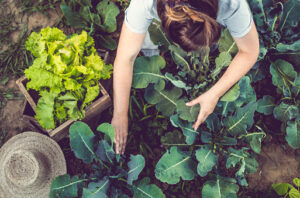When most people think about gardening, the first thing that comes to mind is soil. Soil is essential for gardening, and it’s important to choose the right type of soil for your plants. There are different soil types for gardening, and each one has its own set of benefits and drawbacks. In this article, we will discuss the different types of soil and which one will be best for your garden!
Table of Contents
Basic Concept of Soil
Soil is a mixture of mineral particles, organic matter, air, and water. It’s the basis for all life on Earth! There are three main soil types: sand (the smallest), silt (intermediate-sized particles), and clay (the largest). The type of soil you have will determine what plants can grow in your garden.
Elements of Soil
Soil is made up of four basic elements: mineral particles, organic matter, air, and water. Each element plays an important role in the success of your garden!
Minerals:
Minerals are the inorganic, or non-living, elements of the soil. They are made up of rocks and other materials that have been broken down by weathering. The size and shape of mineral particles determine the type of soil you have.
Organic Matter:
Organic matter is made up of plants and animals that have died and decomposed. It’s an important part of the soil because it helps to improve the structure, fertility, and water-holding capacity of the soil.
Air:
Air is necessary for plant growth. The air in the soil provides oxygen for plants and helps to control the temperature of the soil.
Water:
Water is necessary for plant growth and is the medium through which minerals and nutrients are transported to plants.
Major Types of Soil
Now that we have a basic understanding of what soil is, let’s take a look at the different types of soil!
Clay Soil:
Clay soils are made up of very small mineral particles. They are dense and can be difficult to work with. Clay soils hold water well and are fertile, but they can be sticky if not worked properly! Plants that thrive in clay soil include; beets, carrots, potatoes, and other root vegetables.
Sandy Soil:
Sandy soil is made up of larger mineral particles than clay soils. They are easier to work with because they drain more quickly and don’t hold water as well as clay soils thereby they tend to be less fertile because there is less organic matter present in the soil. Sandy soils have low fertility levels but are well-drained which means that plants will need to be watered more frequently. Plants that thrive in sandy soil include; peppers, tomatoes, cucumbers, squash, and other vegetables that need a lot of water.
Loamy Soil:
Loamy soils are made up of a mixture of sand, silt, and clay particles. They have the best combination of drainage and fertility. Loamy soil has a high amount of organic matter which makes it fertile but also well-drained so plants do not get overwatered. Plants that thrive in loamy soil are; Broccoli, Cabbage, Corn, Melons, and other vegetables that need little water.
Silt Soil:
Silt soils are made up of medium-sized mineral particles. They are easy to work with and have good water-holding capacity. However, they can be infertile if not properly fertilized. Plants that thrive in silt soil are; Cauliflower, Lettuce, Onions, and other vegetables that do not need a lot of water.
Chalky Soil:
Chalky soils are made up of a large percentage of calcium carbonate. They are infertile and have poor water-holding capacity. Chalky soils can be improved by adding organic matter to the soil. Plants that thrive in chalky soil include; Strawberries, Raspberries, Blueberries, and other plants that need acidic soil for their roots to grow properly.
Peaty Soil:
Peaty soils are made up of decomposed plant material. They are very wet and acidic and do not have good drainage. Peaty soils should be avoided if possible because they can be very difficult to work with. Plants that thrive in peaty soil include; Ferns, Azaleas, Rhododendrons, and other plants that need acidic soil for their roots to grow properly.
Soil pH:
In general, soil pH varies between 3.5 and 10. The natural pH of soils in wetter areas is generally greater than 7, whereas it is less than 6.5 in drier climates.
The pH of your soil is another important consideration when choosing the right type of soil for your garden. The pH scale ranges from 0-14, with 0 being the most acidic and 14 being the most alkaline. Most plants prefer a soil pH that falls in the range of neutral (pH 6.5 – pH 7.5) to slightly acidic (pH of 5.5 – 6.5). You can test the pH of your soil with a soil testing kit.
How to Choose the Best Soil for Gardening?
There are many different types of soil available for gardening. The first step is to determine which type you have by using a soil test. You can send a soil sample to your local Cooperative Extension Service for testing or you can purchase a home soil testing kit. Once you know the type of soil you have, you can then choose plants that will thrive in that type of soil, as well as prepare it for planting.
If you are not sure which type of soil you have, ask your local garden center for assistance. They should be able to tell you the type of soil they recommend for your gardening needs.
If you have clay soil, then it is best to choose plants that need lots of water such as tomatoes or peppers. If you have sandy soil, then it is best to choose plants that do not need much water such as cucumbers or squash. If you have loamy soil, then it is best to choose plants that do not need much water such as broccoli or cauliflower. If you have silt soil, then it is best to choose plants that do not need a lot of water such as lettuce or onions.
The Best Soil Type for Gardening
There is no one-size-fits-all answer when it comes to the best soil type for gardening. Different plants grow better in different soils, so you need to choose the soil that will be best for your specific plants. However, there are a few general things to keep in mind when choosing the right type of soil for your garden:
- The pH level should be between ~pH= and ~pH=~.
- The soil should have a good water-holding capacity but not hold too much water (the plants will drown!). It should also drain well, so that excess water can escape without causing problems like root rot or fungal diseases.
- The soil should be fertile, meaning it has a good balance of minerals and organic matter.
- The soil should have a good structure so that it can hold its shape and not become compacted.



